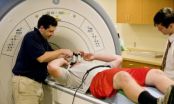(Press-News.org) Saturn's icy moon Enceladus should not be one of the most promising places in our solar system to look for extraterrestrial life. Instead, it should have frozen solid billions of years ago. Located in the frigid outer solar system, it's too far from the sun to have oceans of liquid water -- a necessary ingredient for known forms of life -- on its surface.
Some worlds, like Mars or Jupiter's moon Europa, give hints that they might harbor liquid water beneath their surfaces. Mars is about 4,200 miles across and Europa almost 2,000 miles across. However, with a diameter only slightly more than 500 miles, Enceladus just doesn't have the bulk needed for its interior to stay warm enough to maintain liquid water underground.
With temperatures around 324 degrees below zero Fahrenheit, the surface of Enceladus is indeed frozen. However, in 2005 NASA's Cassini spacecraft discovered a giant plume of water gushing from cracks in the surface over the moon's south pole, indicating that there was a reservoir of water beneath the ice. Analysis of the plume by Cassini revealed that the water is salty, indicating the reservoir is large, perhaps even a global subsurface ocean. Scientists estimate from the Cassini data that the south polar heating is equivalent to a continuous release of about 13 billion watts of energy.
To explain this mysterious warmth, some scientists invoke radiation coupled with tidal heating. As it formed, Enceladus (like all solar system objects) incorporated matter from the cloud of gas and dust left over from our sun's formation. In the outer solar system, as Enceladus formed it grew as ice and rock coalesced. If Enceladus was able to gather greater amounts of rock, which contained radioactive elements, enough heat could have been generated by the decay of the radioactive elements in its interior to melt the body.
However, in smaller moons like Enceladus, the cache of radioactive elements usually is not massive enough to produce significant heat for long, and the moon should have soon cooled and solidified. So, unless another process within Enceladus somehow generated heat, any liquid formed by the melting of its interior would have frozen long ago.
This led scientists to consider the role of tidal heating as a way to keep Enceladus warm enough for liquid water to remain under its surface. Enceladus' orbit around Saturn is slightly oval-shaped. As it travels around Saturn, Enceladus moves closer in and then farther away. When Enceladus is closer to Saturn, it feels a stronger gravitational pull from the planet than when it is farther away. Like gently squeezing a rubber ball slightly deforms its shape, the fluctuating gravitational tug on Enceladus causes it to flex slightly. The flexing, called gravitational tidal forcing, generates heat from friction deep within Enceladus.
The gravitational tides also produce stress that cracks the surface ice in certain regions, like the south pole, and may be reworking those cracks daily. Tidal stress can pull these cracks open and closed while shearing them back and forth. As they open and close, the sides of the south polar cracks move as much as a few feet, and they slide against each other by up to a few feet as well. This movement also generates friction, which (like vigorously rubbing your hands together) releases extra heat at the surface at locations that should be predictable with our understanding of tidal stress.
To test the tidal heating theory, scientists with the Cassini team created a map of the gravitational tidal stress on the moon's icy crust and compared it to a map of the warm zones created using Cassini's composite infrared spectrometer instrument (CIRS). Assuming the greatest stress is where the most friction occurs, and therefore where the most heat is released, areas with the most stress should overlap the warmest zones on the CIRS map.
"However, they don't exactly match," says Dr. Terry Hurford of NASA's Goddard Space Flight Center, Greenbelt, Md. "For example, in the fissure called the Damascus Sulcus, the area experiencing the greatest amount of shearing is about 50 kilometers (about 31 miles) from the zone of greatest heat."
Hurford and his team believe the discrepancy can be resolved if Enceladus' rotation rate is not uniform – if it wobbles slightly as it rotates. Enceladus' wobble, technically called "libration," is barely noticeable. "Cassini observations have ruled out a wobble greater than about 2 degrees with respect to Enceladus' uniform rotation rate," says Hurford.
The team created a computer simulation that made maps of the surface stress on Enceladus for various wobbles, and found a range where the areas of greatest stress line up better with the observed warmest zones.
"Depending on whether the wobble moves with or against the movement of Saturn in Enceladus' sky, a wobble ranging from 2 degrees down to 0.75 degrees produces the best fit to the observed warmest zones," said Hurford.
The wobble also helps with the heating conundrum by generating about five times more heat in Enceladus' interior than tidal stress alone, and the extra heat makes it likely that Enceladus' ocean could be long-lived, according to Hurford. This is significant in the search for life, because life requires a stable environment to develop.
The wobble is probably caused by Enceladus' uneven shape. "Enceladus is not completely spherical, so as it moves in its orbit, the pull of Saturn's gravity generates a net torque that forces the moon to wobble," said Hurford. Also, Enceladus' orbit is kept oval-shaped, maintaining the tidal stress, because of the gravitational tug from a neighboring larger moon Dione. Dione is farther away from Saturn than Enceladus, so it takes longer to complete its orbit. For every orbit Dione completes, Enceladus finishes two orbits, producing a regular alignment that pulls Enceladus' orbit into an oval shape.
The team includes researchers from NASA Goddard, Cornell University, Ithaca, N.Y., Southwest Research Institute, Boulder, Colo., and the University of California, Santa Cruz, Calif. The research was funded by the Cassini Data Analysis Program, which includes contributions from NASA and ESA.
The Cassini-Huygens mission is a cooperative project of NASA, the European Space Agency, and the Italian Space Agency. NASA's Jet Propulsion Laboratory (JPL), a division of the California Institute of Technology in Pasadena, manages the mission for NASA's Science Mission Directorate, Washington, D.C. The Cassini orbiter and its two onboard cameras were designed, developed and assembled at JPL. The composite infrared spectrometer team is based at NASA Goddard, where the instrument was built. Dr. Michael Flasar from NASA Goddard is the composite infrared spectrometer Principal Investigator.
INFORMATION:
For newly released images and more information about the Cassini-Huygens mission visit: http://www.nasa.gov/cassini, http://saturn.jpl.nasa.gov or http://ciclops.org.
Saturn's icy moon may keep oceans liquid with wobble
2010-10-08
ELSE PRESS RELEASES FROM THIS DATE:
3-way control of fetal heart-cell proliferation could help regenerate cardiac cells
2010-10-08
PHILADELPHIA - Heart muscle cells do not normally replicate in adult tissue, but multiply with abandoned during development. This is why the loss of heart muscle after a heart attack is so dire—you can't grow enough new heart muscle to make up for the loss.
A team of researchers at the University of Pennsylvania School of Medicine describe the interconnections between three-molecules that control fetal, heart-muscle-cell proliferation in a mouse model that will help cardiologists better understand the natural repair process after heart attacks and help scientists learn ...
Can you analyze me now? Cell phones bring spectroscopy to the classroom
2010-10-08
CHAMPAIGN, Ill. — University of Illinois chemistry professor Alexander Scheeline wants to see high school students using their cell phones in class. Not for texting or surfing the Web, but as an analytical chemistry instrument.
Scheeline developed a method using a few basic, inexpensive supplies and a digital camera to build a spectrometer, an important basic chemistry instrument. Spectrophotometry is one of the most widely used means for identifying and quantifying materials in both physical and biological sciences.
"If we want to measure the amount of protein in ...
Technique allows researchers to examine how materials bond at the atomic level
2010-10-08
An approach pioneered by researchers at North Carolina State University gives scientists new insight into the way silicon bonds with other materials at the atomic level. This technique could lead to improved understanding of and control over bond formation at the atomic level, and opportunities for the creation of new devices and more efficient microchips.
Manufacturers build silicon-based devices from layers of different materials. Bonds – the chemical interaction between adjacent atoms – are what give materials their distinctive characteristics. "Essentially, a bond ...
Scientists trick bacteria with small molecules
2010-10-08
New Haven, Conn.—A team of Yale University scientists has engineered the cell wall of the Staphylococcus aureus bacteria, tricking it into incorporating foreign small molecules and embedding them within the cell wall.
The finding, described online in the journal ACS Chemical Biology this week, represents the first time scientists have engineered the cell wall of a pathogenic "Gram-positive" bacteria—organisms responsible not only for Staph infections but also pneumonia, strep throat and many others. The discovery could pave the way for new methods of combating the bacteria ...
Brain changes found in football players thought to be concussion-free
2010-10-08
WEST LAFAYETTE, Ind. - A study by researchers at Purdue University suggests that some high school football players suffer undiagnosed changes in brain function and continue playing even though they are impaired.
"Our key finding is a previously undiscovered category of cognitive impairment," said Thomas Talavage, an expert in functional neuroimaging who is an associate professor of biomedical engineering and electrical and computer engineering and co-director of the Purdue MRI Facility.
The findings represent a dilemma because they suggest athletes may suffer a form ...
Author who revealed unethical Guatemala syphilis study writes for Bioethics Forum
2010-10-08
(Garrison, NY) The researcher whose revelations about unethical U.S. studies on syphilis in Guatemala in the 1940's led to apologies from the Obama administration last week has written a commentary for Bioethics Forum, the Hastings Center's online publication. She calls for the need to learn from history to better protect human subjects in the developing world.
Susan M. Reverby, a professor at Wellesley College, describes how she unearthed documents about the study by accident while doing research for a book on the Tuskegee syphilis study. The documents, hidden in the ...
Notre Dame researcher helps discover 'walking' properties of bacteria
2010-10-08
Talk about a walk on the wild side: University of Notre Dame researcher Joshua Shrout is co-author of a new paper that shows that bacteria are capable of "standing up" and moving while vertical.
Shrout, assistant professor of civil engineering and geological sciences and a member of the Eck Institute for Global Health, has been studying the surface motility of bacteria since 2004. In 2008, UCLA researcher Gerard Wong suggested that an undergraduate bioengineering senior design group that he was advising track the bacterium Shrout was studying. After some interesting patterns ...
MRI zooms in on microscopic flow
2010-10-08
"Better and faster results!" is the clarion call for scientists and engineers to continually strive to improve their research tools. Of the tools used to study material structures at the atomic and molecular scales, there is none finer than Nuclear Magnetic Resonance (NMR) spectroscopy and its daughter technology Magnetic Resonance Imaging (MRI). Now, the latest development from the research group of one of the word's foremost authorities on NMR/MRI technology promises NMR/MRI results that are better and faster than ever before – a million times faster!
Through a combination ...
In Parkinson's disease, brain cells abandon mitochondria, researchers report
2010-10-08
In a study that sheds new light on the causes of Parkinson's disease, researchers report that brain cells in Parkinson's patients abandon their energy-producing machinery, the mitochondria. A shutdown in fuel can have devastating effects on brain cells, which consume roughly 20 percent of the body's energy despite making up only 2 percent of body weight.
The findings indicate that boosting the mitochondria with FDA approved drugs early on may prevent or delay the onset of Parkinson's. The study will be published in the one-year anniversary issue of the journal Science ...
Obese workers cost workplace more than insurance, absenteeism
2010-10-08
DURHAM, N.C. -- The cost of obesity among U.S. full-time employees is estimated to be $73.1 billion, according to a new study by a Duke University obesity researcher, published today in the Journal of Occupational and Environmental Medicine.
This is the first study to quantify the total value of lost job productivity as a result of health problems, which it finds is more costly than medical expenditures.
Led by Eric Finkelstein, deputy director for health services and systems research at Duke-National University of Singapore, the study quantified the per capita cost ...



